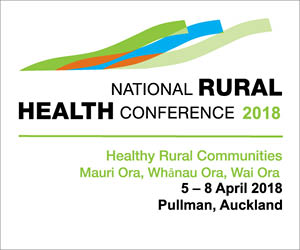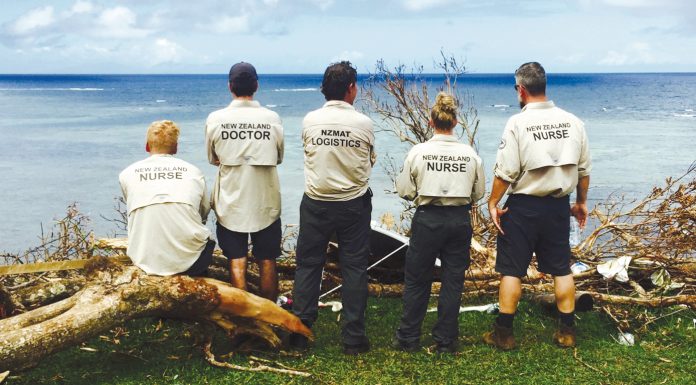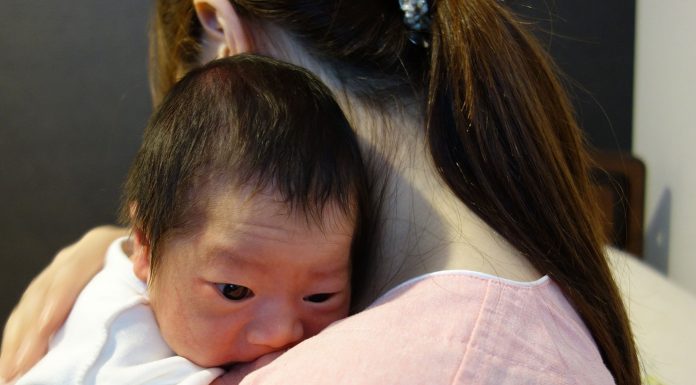Once upon a time, ‘Sister’ ruled the ward. It was a strict hierarchy from senior staff nurse down to nervous first-year student nurse.
Everybody knew their place, everybody knew their tasks, and patients knew the ward routines very well by the time they were discharged a leisurely fortnight later.
Roll on a few decades and task-based nursing is replaced by the philosophically-driven primary nursing model of care. The aim is to develop a therapeutic relationship, by having the same nurse assessing, planning, and carrying out a patient’s personal and clinical cares from admission to discharge.
For many, it remains the ideal. For others, primary nursing is an anachronism from some idyllic but short-lived time of fully registered nurse-staffed wards.
Emerging alongside and gathering pace has been the more pragmatic team nursing model. Rather than a patient having a single nurse responsible for all care, their nurse is part of a nursing team and patient cares can be delegated to other team members, including health care assistants (HCAs). Detractors of this skill mix model point to the UK’s National Health Service, whose longstanding use of HCAs for many tasks is associated with the negligent care and lack of accountability that led to the Mid-Staffordshire Inquiry and Francis Report.
At present, there is no one nursing model to ‘rule them all’ holding sway over New Zealand public hospitals. Models of care not only vary from hospital to hospital, but ward to ward, and are often a hybrid mix with the words collaborative, partnership, and patient-centred also widely used.
Amongst it all, nurses still strive for a therapeutic relationship with their patient. But headlines from up and down the country in recent times about care rationing, understaffing, and stressed-out nurses shows that the ideal of nurses having time to shower all their patients or brush their hair is definitely under threat at best, or at worst, lost long ago.
With patients sicker, ward beds rarely empty, and constant patient churn, Dr Jill Clendon believes that trying to deliver a primary nursing model is “probably wishful thinking”.
Clendon, a New Zealand Nurses Organisation researcher, has been working on a major research project looking at the big picture future of nursing models of care.
“In a rapidly evolving health environment facing significant challenges associated with an ageing population, ageing health workforce, and increasing patient acuity, there is widespread agreement that current models of health care provision will struggle to meet future health needs,” is how she opens her research report.
Currently, she has a draft policy framework out for stakeholder consultation that looks at the fundamental principles she believes any nursing model of care should be measured against, whether it be district nursing or a paediatric ward (see panel below).
But pragmatism also has to play its part in today’s resource-stretched public hospitals. Clendon believes the primary nursing model, still beloved and practised by many as best as they can, is “realistically no longer such a viable option”.
Professor Jenny Carryer agrees. “We’re still maintaining an illusion that it’s possible with the short length of stay and the bed churn and the staffing levels for RNs to be all things to all people,” says Carryer, the executive director of the College of Nurses Aotearoa.
She says the ideal of nursing doing all cares was possible back in the days of an average patient stay of a fortnight. People also forget that when primary nursing first came into vogue, wards were still heavily populated with student nurses, who filled many of the roles of today’s HCAs. By the time the 70s rolled into the 80s, wards were no longer awash with student nurses as hospital-based training schools closed their doors, and says Carryer, for a comparatively short time in the 80s, wards were solely staffed by registered nurses and enrolled nurses.
“Then we hit the 90s, where there was this huge drive towards so-called economic reform, although I would never grace it with that word,” recalls Carryer. “My own research has shown that the level of RN staffing began dropping in 1989 and reached its lowest point in 2000.”
As the nursing numbers dropped during the 1990s, the move to substitution with the precursors of HCAs began and the concept of ‘skill mix’ introduced. Her research showed that during the same time scale, of 1989 to 2000, the average patient stay dropped from 14 days to 4.5 days and nurse sensitive patient outcomes, like infections and pneumonia, escalated. Nursing hours per patient days did not return to 1989 levels until 2006–2007, but patient stays haven’t got any longer or patient acuity any less.
So has primary care nursing had its day?
“It was a brilliant concept. Most nurses would love to give 100 per cent care to a reasonable amount of patients,” says Carryer.
“But nurses’ current level of expressed distress, the level of nurse sensitive negative outcomes – which my research picked up – would tell us that that model is not successful.”
What’s happening on today’s ward floor?
Heather Gray, director of nursing for Christchurch Hospital, says it is probably the nurses of her generation, working in and around hospitals for 30 years or so, who remember with most fondness primary nursing’s heyday.
“But we also need to live in today and keep moving forward.”
Christchurch currently has a high registered nurse workforce, with RNs doing most of the care with some assistance from hospital aides. Gray says while she tends to think as a primary nurse, she also thinks as a leader and personally believes
Canterbury District Health Board will have an HCA workforce in the future and is likely to increasingly move to a more ‘skill mix, team nursing’ mode. It is already underway in some wards (see case study sidebars) and student nurses are increasingly being exposed to collaborative, team-based styles of working through dedicated education units.
“The tribe raises the new nurse … it’s been a huge plus for us.”
She says the challenge for nursing directors like herself is not to take a “one size fits all” approach when it comes to models of care. In today’s culture of aiming for continual improvement of the patient journey, she believes any model of care shouldn’t stand still.
“You may have a minute in time when you say ‘that is a model of care’, then there is another change.”
Rather than interceding and imposing a model from the top, she believes the most important is setting the underlying principles – and that any model should include being patient-centred and offering efficient, effective pathways of care that matter for the patient.
“Also partnership – nursing is a partnership with a patient, so if you are a ward nurse that hasn’t seen a patient for some time, you are not really nursing.”
Post-quakes, the hospital has fast-tracked integrated models of care, like CREST and Acute Demand, which sees more of the city’s “less sick” patients being treated in the community or discharged early, leading to a concentration of more of the – very sick – in its hospital wards. This has seen models of care evolve in response to the new environment of short stay and patient churn requiring a high RN workforce to assess and plan early discharges.
Currently, Canterbury hospital aides are not required to have any set qualification, and it is only just piloting a Level Three Careerforce-based national certificate to some of its aides in Burwood Hospital.
With one of the country’s biggest ever public hospital works projects underway in Christchurch – a $650 million project for new hospital wings at Burwood and Christchurch campuses, along with post-quake redevelopments – new models of care are under development for the new look hospitals with Gray personally keen for these to be principles-based.
New hospital, new model
New hospitals are often a wellspring for new models of care – as the physical restrictions of ward layouts, room configurations, and shortages of staff space can often restrict or stymie change in ageing hospital buildings.
When staff moved into Auckland City Hospital back in 2003, the Auckland DHB took the opportunity to introduce a team model of care and put its hospital aides through an NZQA level four certificate programme to create a new health care assistant role.
Jane Lees, until recently the acting director of adult health, cardiac, and cancer care, says it is fair to say that its unregulated workforce went from being supplementary to nurses on the ward to a complementary part of the new team nursing model.
She says arriving at the then-Auckland Hospital 18 years ago, the nursing model she first encountered could be better described as room-based nursing rather than primary nursing, as a nurse could be allocated a different six-bedded room day-by-day.
Now a typical 24-bed ward has two teams – with usually three RNs and an HCA per team, but depending on the nursing skill mix, a team could also be two RNs, an EN, and HCA, or three RNs and an EN. Each team has an RN leader and each nurse is usually allocated the care of four patients in a four-bedded room, but there is a team bedside handover and the team supports each other and the team’s patients.
“That is the fundamental difference; it is a collaborative, integrated model,” says Lees, “whereas before there was just you in a six-bedded room, and if you were drowning, who would know?”
Like Auckland before them, Capital and Coast, under former director of nursing Cheyne Chalmers, introduced a team nursing model when it moved into the new Wellington Hospital in 2009 and also looked at its regulated to unregulated skill mix.
Current director of nursing and midwifery Andrea McCance, working in Melbourne at the time, can recall people looking back across the Tasman and asking “what’s going on across the ditch, the Kiwis appear to be ahead of the game”.
Like Auckland, Capital and Coast had a big push to upskill and train an HCA workforce to work under the new model but opted for a Level Three National Certificate in Community Support Services as its benchmark training level.
“So here we are five or six years later and the model of care has evolved into a more hybrid model,” says McCance.
“It is no longer a purist model, with a dilution of the HCA workforce due to a more acute and complex patient population, which has required an increase in the registered nurse workforce.”
“But having said that, we never stay still or static, so we are reviewing our models now, particularly as we – along with our DHB partners – consider integration of clinical services across our health care system,” adds Vicky Noble, the DHB’s primary health care director of nursing.
Debate needed about the future
Clendon believes it is now time for nursing to do some serious thinking and start a debate about what is the optimal model for making the most of nurses’ knowledge and skills.
“What is going to be the best in terms of patient outcomes given our limited resourcing and our increasing patient acuity? What is the best way to use the education, knowledge and skills of RNs in the workplace?”
“Is it to do showers and feed patients?” Clendon says yes, in some circumstances, but with DHBs expecting wards to tighten their belts, something has “got to give” and maybe registered nurses letting go of more tasks at the bottom of their scope is the right way to go.
“Nurses are still slow to give up the things that they traditionally hold precious,” says Clendon.
Even though it may free up more time for nurses to just sit down and listen and reassure a patient, which, Clendon says, can be the essence of nursing.
Likewise, Carryer says some nurses might argue they need to shower patients to assess their skin but “trust me – they are not achieving that now, anyway”. If an HCA is delegated to check a patient’s skin integrity during showering they are “not stupid” and will report back if somebody has a red patch or skin break.
“And hopefully because the RN isn’t flat out trying to shower three other people in the next room she might actually come and look at the pressure sore and instigate the right treatment for it,” says Carryer.
Fears that having HCAs and ENs doing more traditional RN tasks will fragment care and put patient safety at risk are also not shared by Lees following a decade of the team model in place in Auckland.
“Having HCAs and ENs on the ward is about better care, and the skill mix contributes and complement each other,” says Lees.
“Probably the most important skill the RN needs to have is delegation – and understanding who to delegate what to. For example, knowing why an EN or HCA can’t provide feedback on somebody’s skin condition.”
While Clendon believes primary nursing is no longer a viable option she is also not totally convinced that team nursing is the inevitable model of care for acute hospital wards. She also calls for caution before New Zealand goes too far down the route of building up its unregulated HCA workforce – with UK’s Mid Staffordshire NHS Trust being a cautionary tale of how bad things can go – and particularly when New Zealand is investing in a new generation of enrolled nurses, which are an accountable and regulated nursing workforce with known education levels. (See article on HCA training, page 10.)
Carryer acknowledges that delegating cares to a regulated EN is more straightforward than to an HCA but believes nationally standardised training and employment practices for HCAs is also an answer.
With research consistently showing that RNs on the ward on both sides of the Tasman are spending about three hours of an eight-hour shift at the patient bedside, she also believes something has “got to give”.
“Are we foolish to believe RNs can continue to ‘care for’ patients in that space of time?” Instead she advocates nurses should move from ‘caring for’ to ‘caring about’ their patients including using a “very rigorous assessment, delegation and supervision model” to ensure they follow-up and check the outcomes of delegated tasks.
“If you use a ‘caring about’ model than you are saying that the RN still has the absolute accountability of the experience and safety of that patient.”
Gray considers Carryer’s proposal an interesting one. “It’s about being the leader of clinical care rather than providing it. Or maybe mixing the two because I think both are important as caring ‘about’ is okay but I think as an RN you can’t entirely move away from caring ‘for’. There has to be a blended model for me.”
Nobody wants to return to the days of whatever Sister says rules. Or economic imperatives and business-speak dictating what nurses can or cannot do for their patients. Maybe it is time for a fresh debate as a profession about what is the best use of a nurse’s skill, knowledge, and caring hands?
(See also related case studies in this issue)
What exactly is a nursing model of care again?
There appears to be no easy answer to that question. On the big picture level, models of care are a philosophical and theoretical approach to delivering nursing care that is effective and appropriate for people’s needs.
With nursing care delivered from remote rural communities to big city hospitals and everywhere in between there is no one, simple, single model to cover all people’s needs. Examples of models of care in nursing include nurse-led clinics, case management, whānau ora, the ‘recovery model’ in mental health, and ‘person-centred care’ in dementia facilities.
Primary nursing vs team nursing
There are also models of care in the narrower sense that this article is concentrating on, that is how nurses deliver care at the ward level in our hospitals, which are largely variations on two broad themes:
Primary nursing: Comprehensive, individualised care provided by the same nurse throughout the period of patient care.
Team nursing: A team leader and team members providing various aspects of nursing care to a group of patients. Along with registered nurses the team’s skill mix can include enrolled nurses and health care assistants (HCAs).
Research seeking an answer for New Zealand
There can and should be some common underpinning principles to all nursing models of care, believes NZNO researcher Jill Clendon. She has just completed a major research project for the New Zealand Nurses Organisation looking at Kiwi nurses’ perceptions of models of care. This has led on to a draft policy framework for models of care currently out for consultation with stakeholders that proposes a set of core principles for models drawn from both Clendon’s literature review and qualitative research with Kiwi nurses.
NZNO says models of care principles should include:
- person-centred
- culturally safe
- enable Māori-centred approaches
- ensure accessible, quality, evidence-based health care
- enable interdisciplinary practice
- make clear health professionals’ roles and responsibilities
- facilitate nurse leadership
- ensure staff have appropriate training and skills
- develop effective communication strategies
- focus on primary health care (in broadest sense of general health and wellbeing)
- maintain ‘healthy awareness’ of risks associated with business models.
For more information on the research underpinning the draft policy go to: www.nzno.org.nz/resources/nzno_publications






















